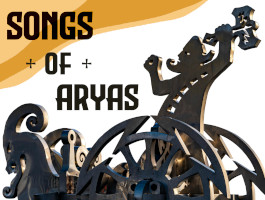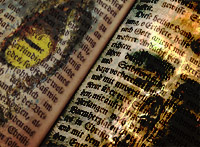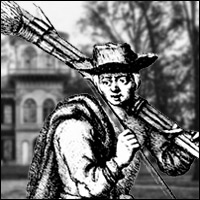While speaking with the Colonel concerning his military experience, he indicated his advanced age in a snappy way, “Oh, since Christ was a Corporal.”
I then wondered, once again, at the use of that term for the lowest ranking of military NCOs. Were these men called corporals because they, with their hand, administered the corporal punishment?
After an extensive review, this does not seem to be the case. Rather, the two terms have another relationship, one more sinister. The root is Latin and the word, used by many militaries, means “head of the body,” or leader of a small body of men.
In that light, calling “corporal” the many and varied forms of beating which man has routinely subjected his fellows to for the life of civilization, takes on an even more sinister meaning. For corporal punishment means to rule the body with the head, making of the object of the beating a mere beast suffering compliance to the will of the headmaster. Indeed, an 1860 case of a school master killing a student began to bring attention to this common brutality.
As a 13-and 14-year old in Trinity Middle School in Washington, PA, I witnesses boys, including my brother, being beaten with weapons by sadistic teachers, using the same kinds of paddles that I have since discovered were used to kill sturdy slave men in Plantation America.
I was interested to discover that the 40-lash whipping law in Plantation America was, if not descended from, was at least prefigured by Hebrew and Roman laws, and ensconced in British rule. With lashes in the British Navy ranging up to 200 and with 100 common, one is granted a vision of the typical health of the ancient slave of Rome and of Plantation America. If a 130-pound British seaman could routinely survive 100 or 200 lashes, than how weak must have been the common human slave stock of antiquity and modernity, if 40 lashes was judged the limit of their endurance?
Sources accessed for the pressgang section indicate that food rations in the British Navy of the 1700s and 1800s were far better than even the working poor could manage when free, let alone the sorry redneck suffering from pelegra from eating only maize and working from sun-up to sun-down.
Quintillian, a Roman writer on law and oratory, and Plutarch, thought it shameful to whip children like slaves and recommended against it as did Galen as a more general principle, as the Physician of the gladiators, who found it unhealthy both for slave and master.
Of course, the Scriptures approve of beatings as a sign of corrective love. Do, note, however, that according to the Book of Job, that the Hebrew son, like his later Roman counterpart, was regarded as the property of his father. This sentiment held all through Plantation America and into the mid-20th century.
“He that spareth the rod, hateth his son; but he that loveth him, chasteneth him betimes.” (Proverbs, XIII, 24)
“A fool's lips enter into contention, and his mouth calleth for strokes.” (Proverbs, XVIII, 6)
“Chasten thy son while there is hope, and let not thy soul spare for his crying. (Proverbs, XIX, 18)
“Foolishness is bound in the heart of a child; but the rod of correction shall drive it from him.” (Proverbs, XXII, 15)
“Withhold not correction from the child; for if thou beatest him with a rod, thou shalt deliver his soul from hell.” (Proverbs, XXIII, 13–14)
Beating with a rod is the use of a weapon on a helpless, submissive and often bound person. The correction described in Proverbs is beating a child beyond the point of tears and into submission. A civilization will generally value this in a parent, as it tends to produce a minority of psychopathically dominant personalities and a majority of submissive persons, which is essentially the psychology of the human social pyramid we now live under. A unique exception, the Spartan agoge system, was calibrated to create both in one person, a violently dominant warrior who is also submissive to the state. So, for the same reasons that primitive warrior societies almost always make beating children taboo, Civilization, as the eldest Sadomasochism contract, thrives on brutality. The genius of our current, information-based system is that such punishment and brutality against the weakest individuals is now almost exclusively directly spiritual.
The forms of bodily punishment, or more brutality “corporal” punishment, indicating the controlled abuse of a none-sovereign human’s body by the mind that controls it and/or wields or directs the tool of punishment and correction, were and are:
-1. Belting [the common African American tool for child beatings to the present day]
-2. Birching [see the cover of So Her Master May have Her Again]
-3. Caning [Southeast Asian variation on “the English Vice”]
-4. Cat o Nine tails [British Naval preference]
-5. Flagellation [ including most forms of specialized beating punishments other than the use of a whip, and was abolished in England in 1948!]
-6. Foot whipping [a Moroccan favorite for white slaves]
-7. Knout [a Swedish-Russian whip with heavy knot or knots]
-8. Paddle [1970s, Washington County, PA schools]
-9. Scourge [generally a three-headed whip of the same type as the single-headed knout and nine-headed cat o nine tails]
-10. Sjambok [ an African cattle whip]
-11. Slippering [how one beats his dainty slave girl, often replaced by a flip-flop, sneaker or high-heeled shoe in American ghettos]
-12. Spanking [preferred for children]
-13. Strapping [a length of leather for whipping]
-14. Switch [of hazel, hickory or willow, used to inflict maximum pain and bleeding with minimal muscular and skeletal damage, ideal for children]
-15. Tawse [a Scottish forked strap employed in state schools until 1987! You fucking savages.]
-16. Riding crop [another tool designed to torment large thick-hided beasts and used on people]
-17. Whip [a Southern American preference for whipping, often made with black snake skin, and known for deep cuts and the lifting out of gobs of flesh]
Some illustrations with captions from an online listing:
A man holds a woman’s arm behind her like an arresting officer and birches her.
“Husaga (the right of the master of the household to corporally punish his servants) was outlawed in Sweden for adults in 1858.”
“An illustration of Corporal punishment in a women's prison, USA (ca. 1890),” depicts a beautifully formed woman being beaten by another while a man looks luridly on.
“Depiction of a flogging at Oregon State Penitentiary, 1908,” demonstrates the extreme brutality of American prisons of the era which had inherited the burden of brutalizing the most hopeless men previously consigned to plantations in the former age. This was the very hellish life that created homosexual rapist and mass murderer Carl Panzram. With that in mind, let us recall that male slaves often outnumbered female slaves 95-to-5 in the Plantation Era and imagine the results of such mass cruelty, in which the normal slave was lashed 30 times once a week.
The illustration that follows is of an Iranian foot flogging from 1910, which seems less brutal than what was being done in Oregon in 1908.
One thing is certain from this survey and from previous investigation: the Anglophone world, has produced more variations in weapons for the beating of powerless humans than any other society—and indeed may equal all other societies combined for inventive cruelty—and also uses a language that has over a dozen terms for unfree person forced to toil by a master or overseer, all of which the Anglophone speaker ever insists means something other than slavery.
Explore Plantation America at Patreon:
link › patreon.com/jameslafond
A whipping on the cover of Into Wicked Company, from Planation America which was curated as "Latin American" but was not.
Birching illustration:
Etymology
“The word is derived from the medieval Italian phrase capo corporale ("head of a body"). It may also be derived from an appointment as an officer's bodyguard originally being an adjective pertaining to the word "body".”
Sources
“Because wearing shoes is an integral element of societal appearance since antiquity, the visual exposure of bare feet is a traditional and sometimes even ritualistic practice to display the subjection or submission of a person under a manifestation of superior power.”
link › en.wikipedia.org/wiki/Knout
link › en.wikipedia.org/wiki/Whip











Now it’s “Queen of the Bolsheviks, first of her name, rallier of woke mobs, Arch-Tweetress of problematic vocabulary, Lord-Commander of the social justice warriors, vanquisher of the cis-male, and defender of the nonbinary femmes.”